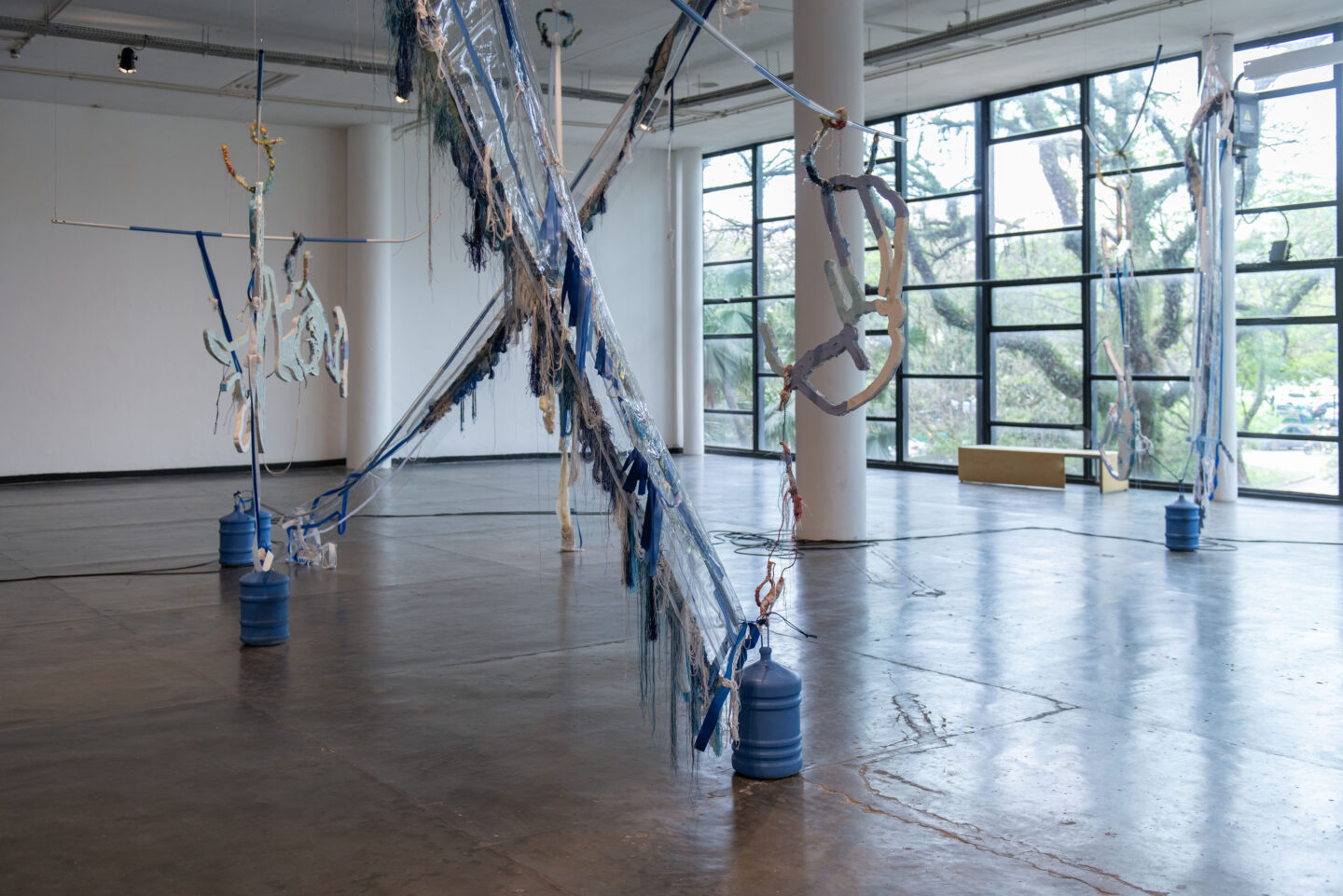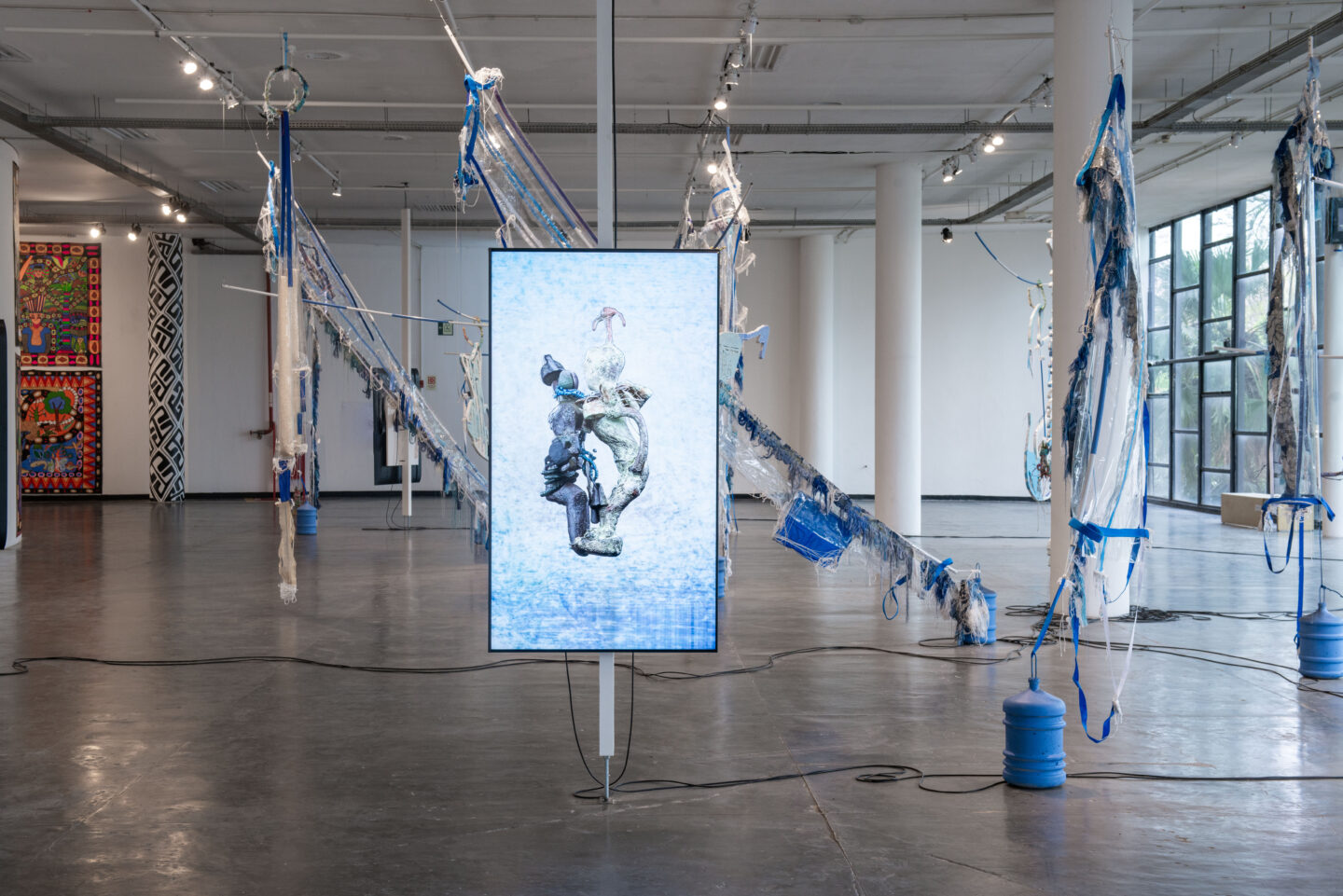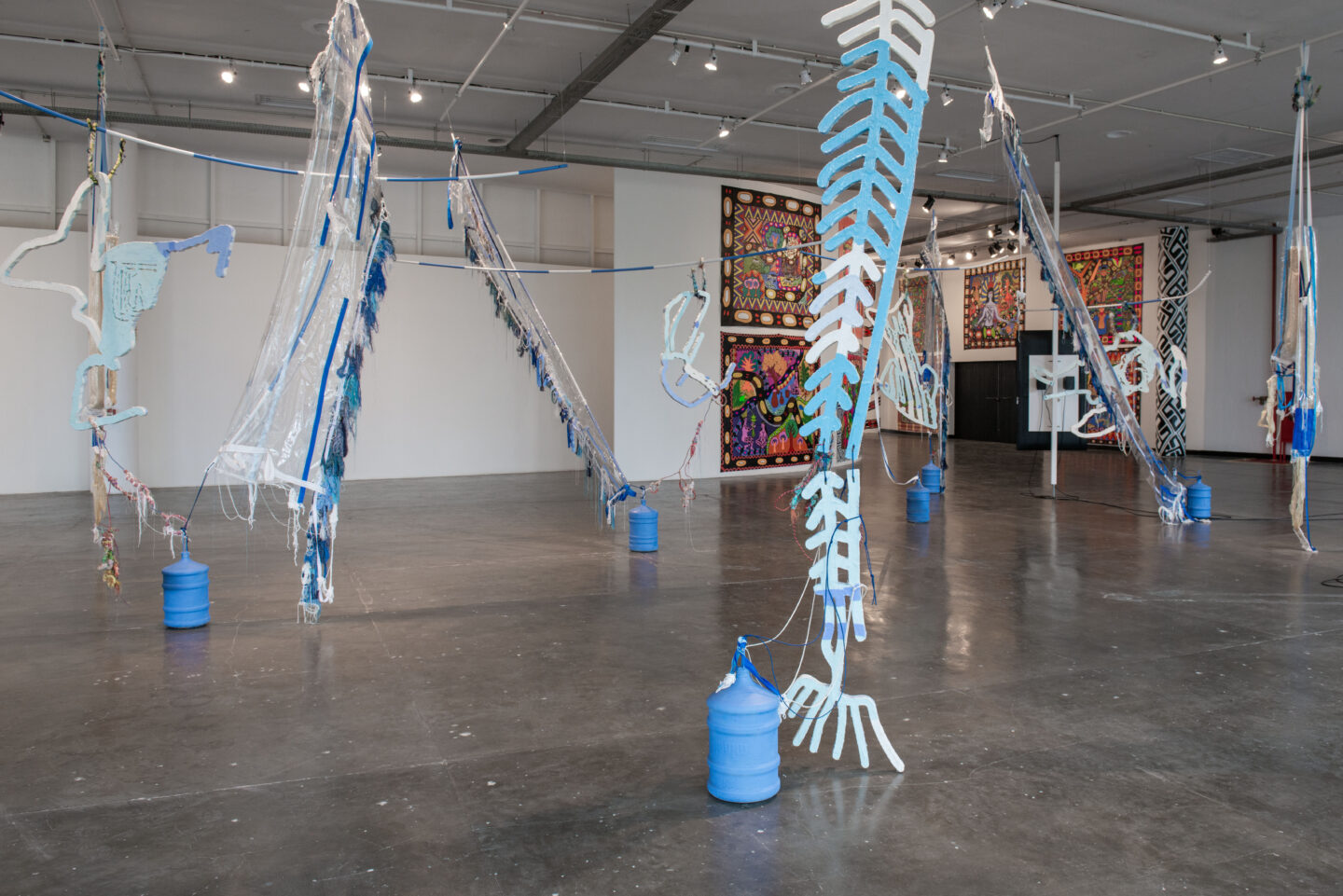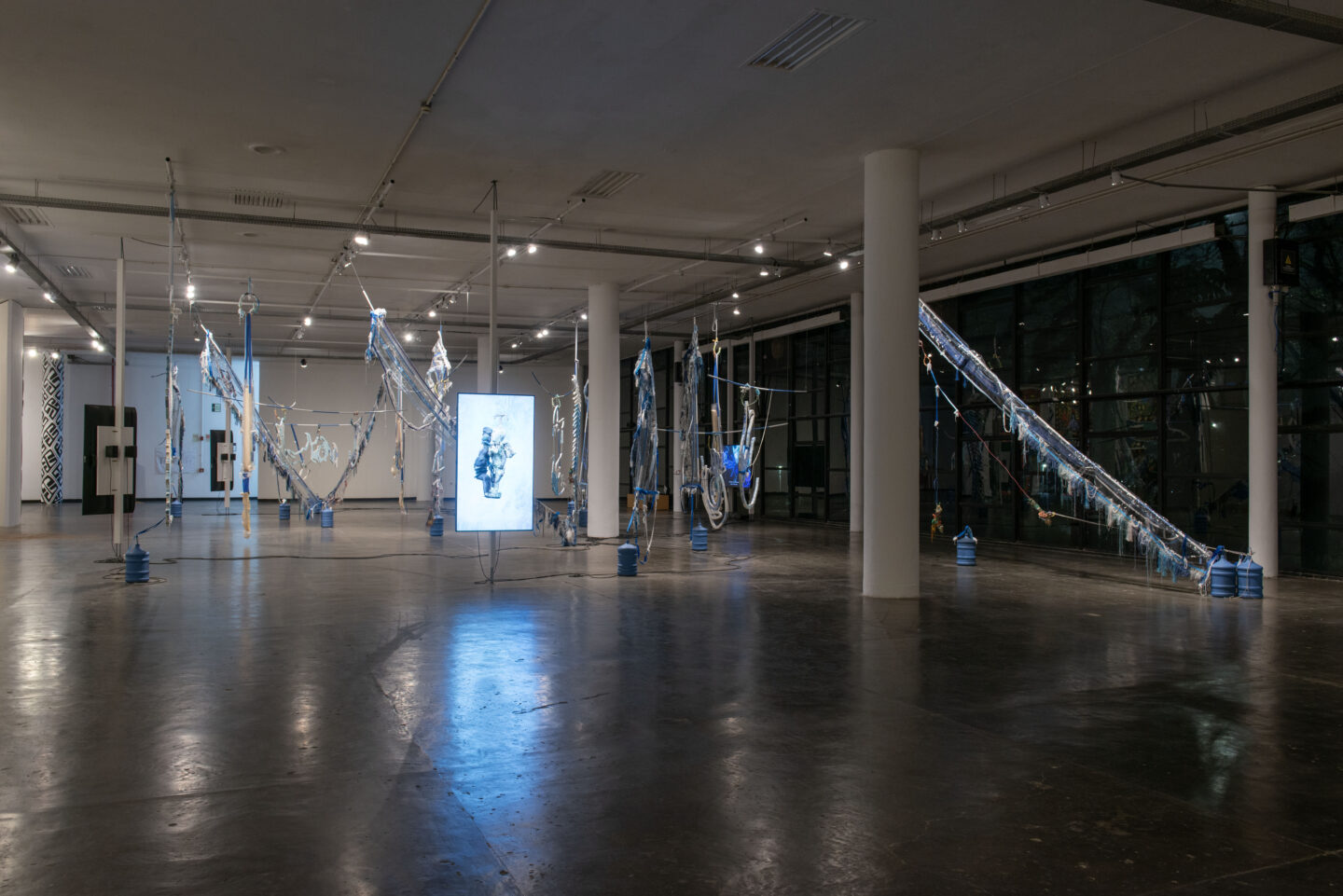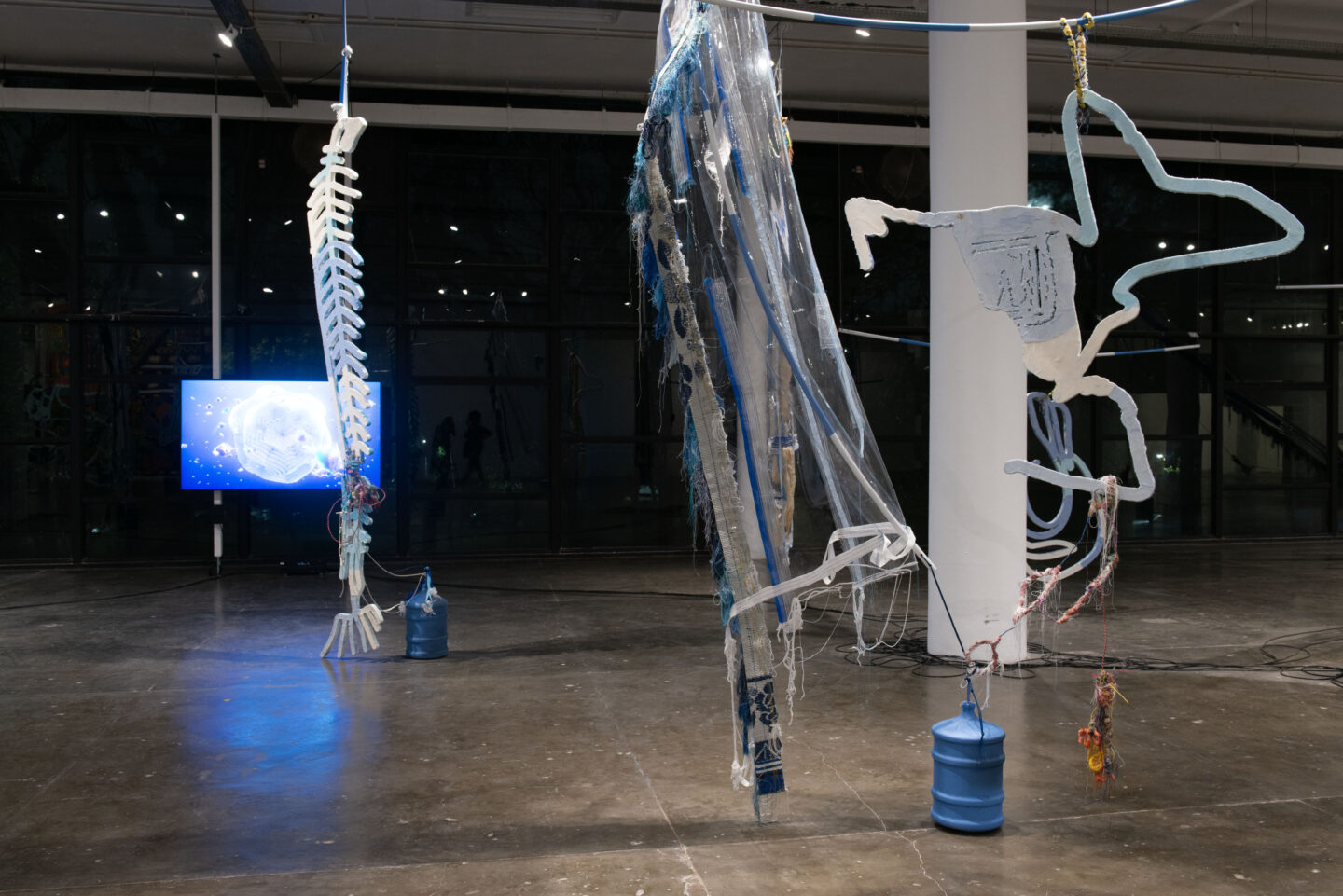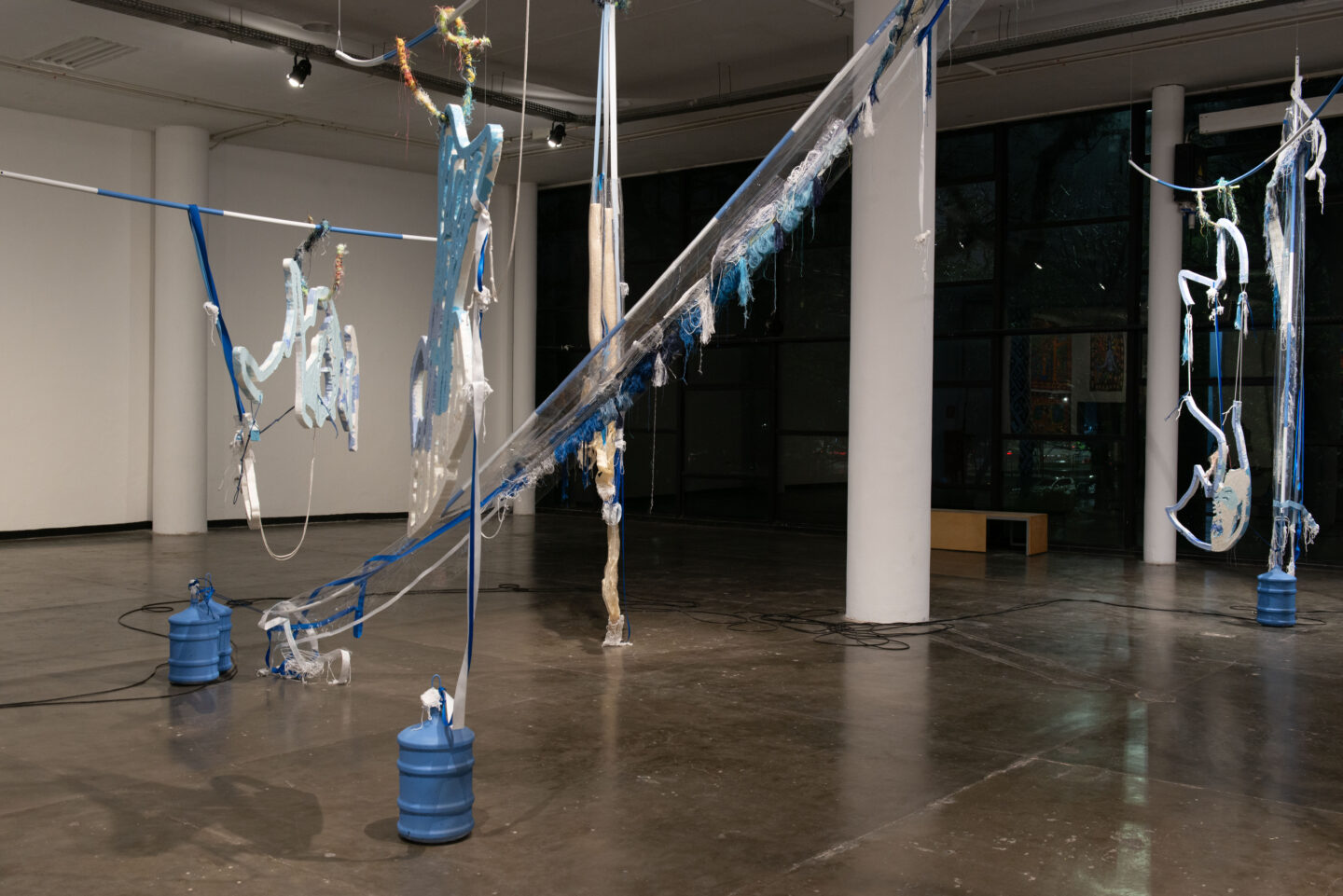
Julien Creuzet
Martinican thinker Edouard Glissant’s Poetics of Relation begins with “The Open Boat,” a short but weighty text that I have returned to again and again since I encountered it fifteen or so years ago. The essay closes with the following sentences: “…there is still something we now share: this murmur, cloud or rain or peaceful smoke. We know ourselves as part and as crowd, in an unknown that does not terrify. We cry our cry of poetry. Our boats are open, and we sail them for everyone.” ¹ Julien Creuzet’s artwork is, for me, that yawning, confounding, exciting open boat. To walk into one of Creuzet’s installations is to be overwhelmed by color and texture and line – fuzzy yarn, neon plastics, fishermen’s nets, shimmering metals, unidentified coloured liquids in water bottles suspended just so, and on and on. It is an assault, frightening in its indecipherability, and scintillating in its sensuality. More a poem than an essay, we don’t have solid figures, only the outlines of things. Where objects are decipherable, as in his videos, they come together in unusual combinations, bouncing off each other, their meanings shifting, associations emerging and recalling Benitez-Rojo’s “soup of signs.” ²
All of this is deliberate, of course. Creuzet is committed to an endless chain of reference that conjures the “part and crowd” of Pan-Africanist thought and experience. His work reminds us that much is shared across the African diaspora, but much is not. Negritude is related to, but not the same as Black Power. Is the Mami Wata of Haiti, the Mami Wata of Louisiana? Is Mami Wata Cuba’s Yemayá? Brazil’s Iemanjá? Is she Jamaica’s River Mumma? These recurring water femmes with their fish tails, themselves a kind of syncretism, cluster like “cloud or rain or peaceful smoke,” droplets hanging in air, linked by some invisible, elusive but undeniably perceivable something. Creuzet would have it no other way. The demand for transparency is too often violent, why not revel in the opacity of the other, of the self? After all, if you could walk into Creuzet’s installation and know exactly what it was, consuming and digesting without event, would it be as good? Would you feel it as deeply? I think not. Better to linger, wander, let your thoughts double back on themselves, free associate, argue with a friend. Pleasures beyond what you can name await.
nicole smythe-johnson
Julien Creuzet (Le Blanc-Mesnil, França, 1986. Lives in Montreuil, Seine-Saint-Denis, France) develops a multi-disciplinary practice that intertwines poetic, sensory and social forms through combinations of sculpture, installation, video, sound, and textual intervention. He has had solo exhibitions in spaces such as the Centre Pompidou and Palais de Tokyo (Paris, France). He has also participated in group exhibitions at the Musée d’Art Moderne de la Ville de Paris (France), Momenta Biennale de L’image (Montreal, Canada), Frestas – Trienal de Artes 2020/21 (Sorocaba, SP, Brazil), Manifesta 13 (Marseille, France), and the 12th Gwangju Biennale (South Korea).
This participation is supported by Institut français.
1. Édouard Glissant, Poetics of Relation. Translated by Betsy Wing. Ann Arbor, MI: University of Michigan Press, 1997.
2. See Antonio Benitez-Rojo, The Repeating Island: the Caribbean and the Postmodern Perspective. Durham: Duke University Press, 1997.
- Vista da obra ZUMBI ZUMBI ETERNO, de Julien Creuzet, durante a 35ª Bienal de São Paulo – coreografias do impossível © Levi Fanan / Fundação Bienal de São Paulo
- Vista da obra ZUMBI ZUMBI ETERNO, de Julien Creuzet, durante a 35ª Bienal de São Paulo – coreografias do impossível © Levi Fanan / Fundação Bienal de São Paulo
- Vista da obra ZUMBI ZUMBI ETERNO, de Julien Creuzet, durante a 35ª Bienal de São Paulo – coreografias do impossível © Levi Fanan / Fundação Bienal de São Paulo
- Vista da obra ZUMBI ZUMBI ETERNO, de Julien Creuzet, durante a 35ª Bienal de São Paulo – coreografias do impossível © Levi Fanan / Fundação Bienal de São Paulo
- Vista da obra ZUMBI ZUMBI ETERNO, de Julien Creuzet, durante a 35ª Bienal de São Paulo – coreografias do impossível © Levi Fanan / Fundação Bienal de São Paulo
- Vista da obra ZUMBI ZUMBI ETERNO, de Julien Creuzet, durante a 35ª Bienal de São Paulo – coreografias do impossível © Levi Fanan / Fundação Bienal de São Paulo
- Vista da obra ZUMBI ZUMBI ETERNO, de Julien Creuzet, durante a 35ª Bienal de São Paulo – coreografias do impossível © Levi Fanan / Fundação Bienal de São Paulo
- Vista da obra ZUMBI ZUMBI ETERNO, de Julien Creuzet, durante a 35ª Bienal de São Paulo – coreografias do impossível © Levi Fanan / Fundação Bienal de São Paulo

 Português
Português